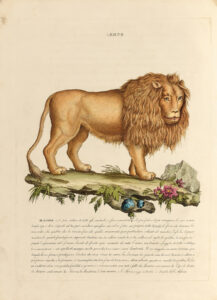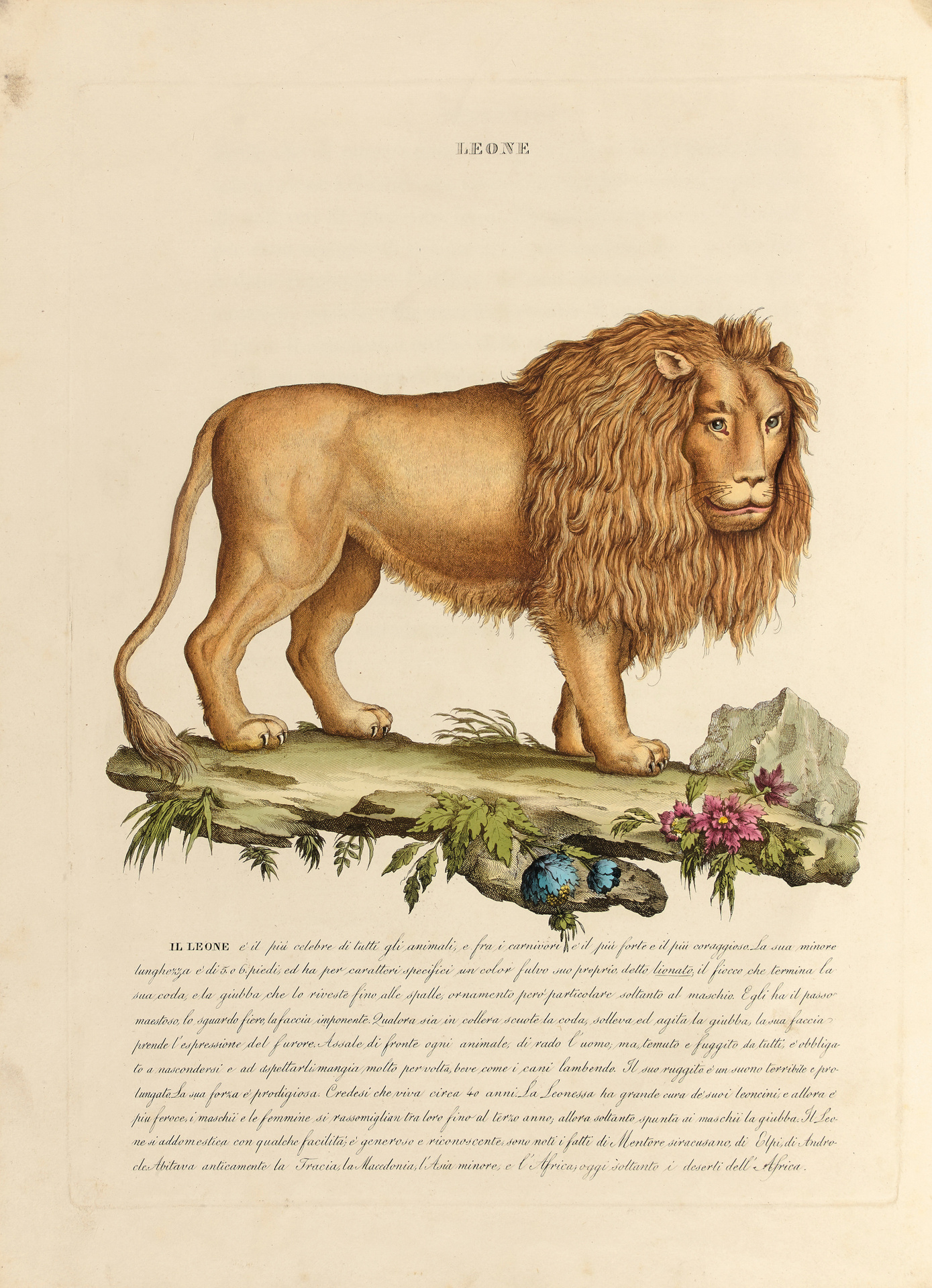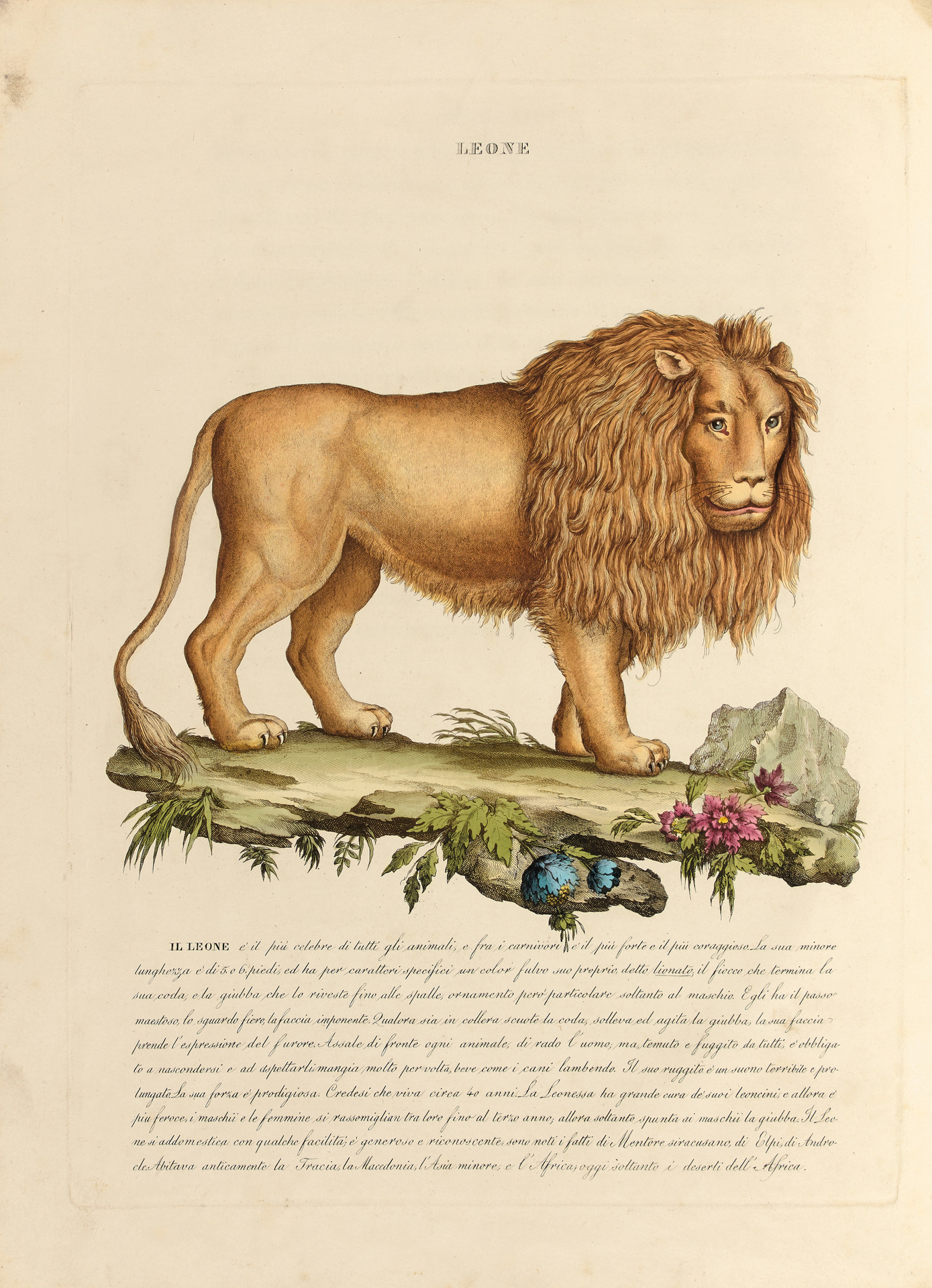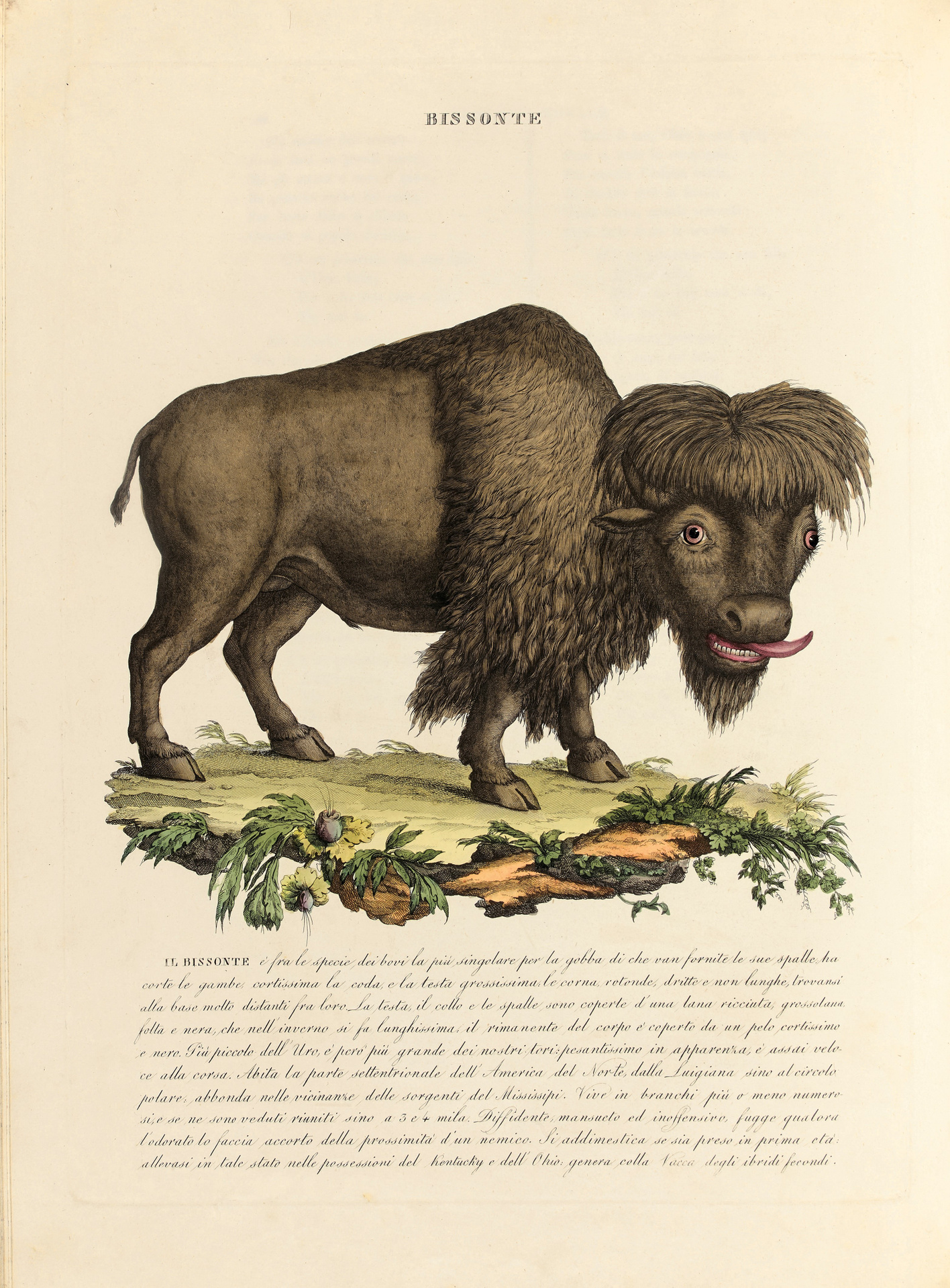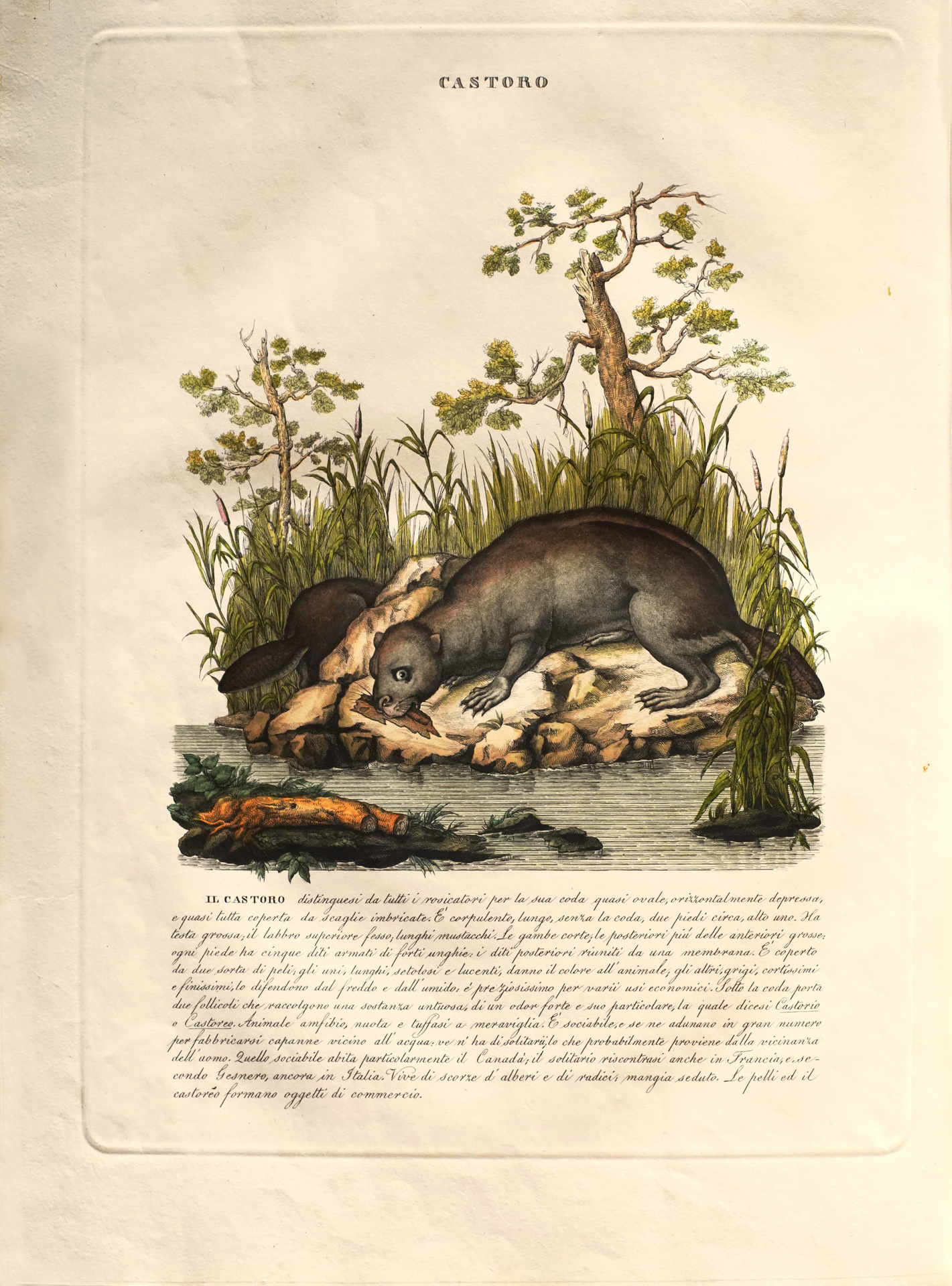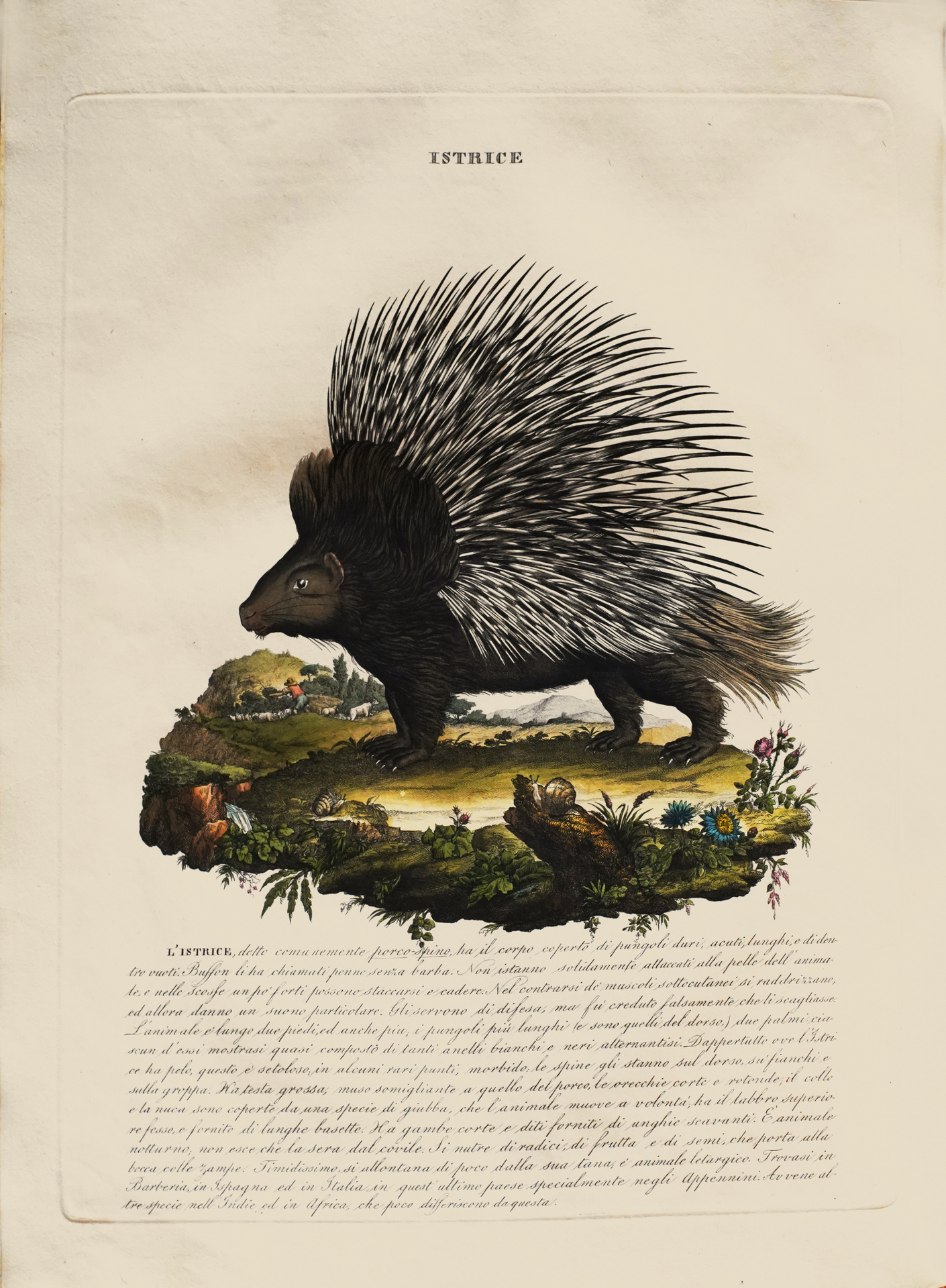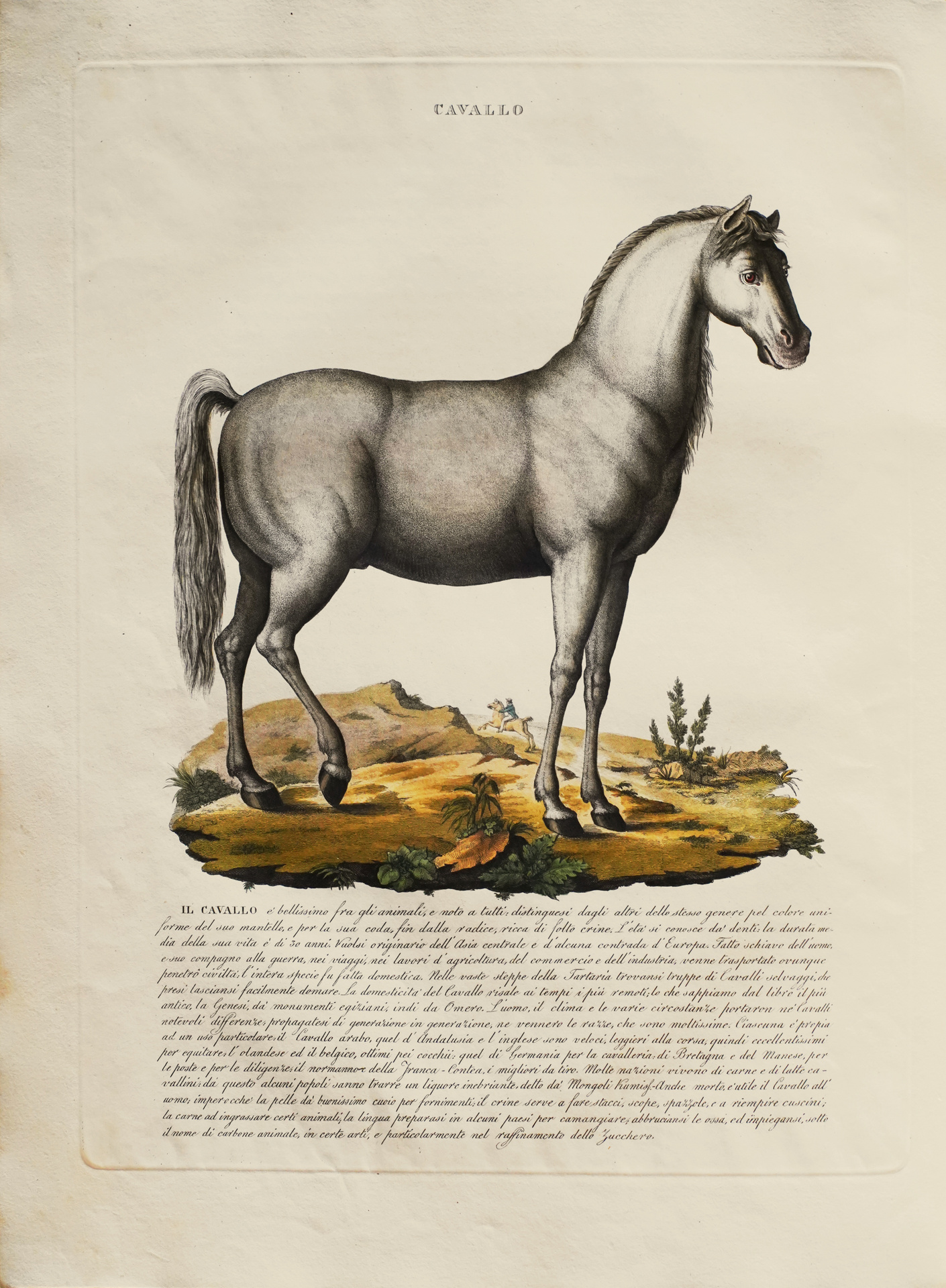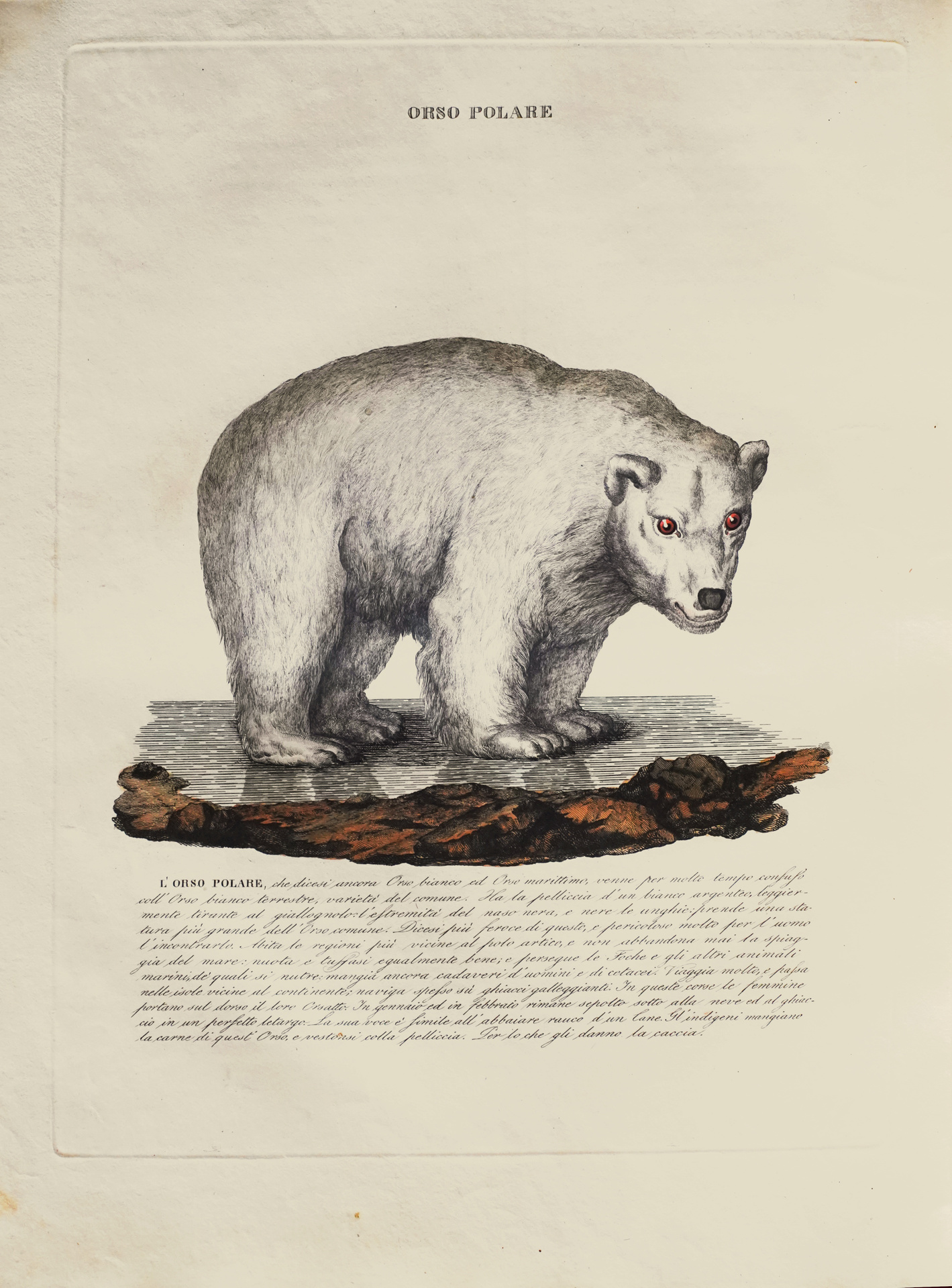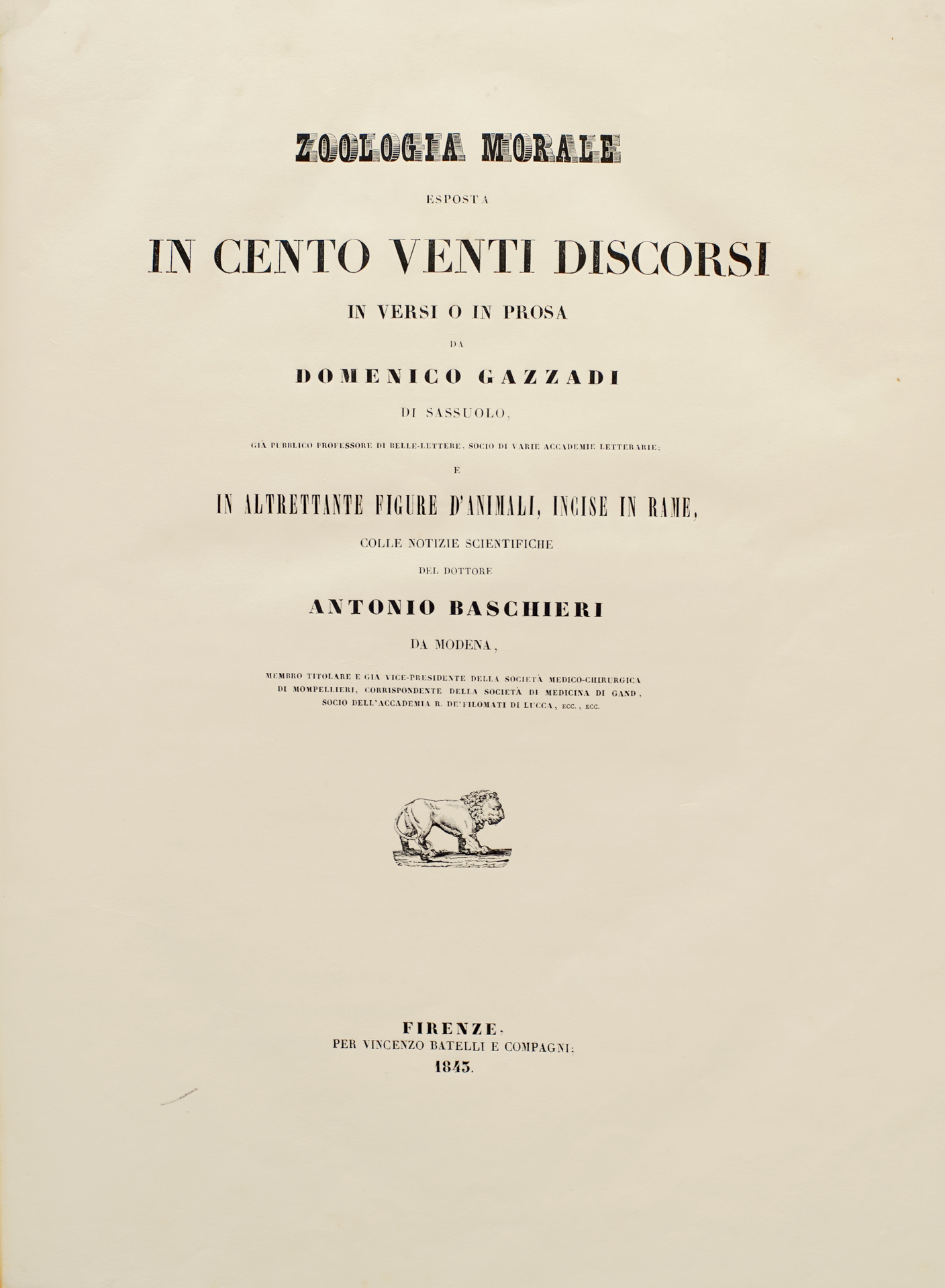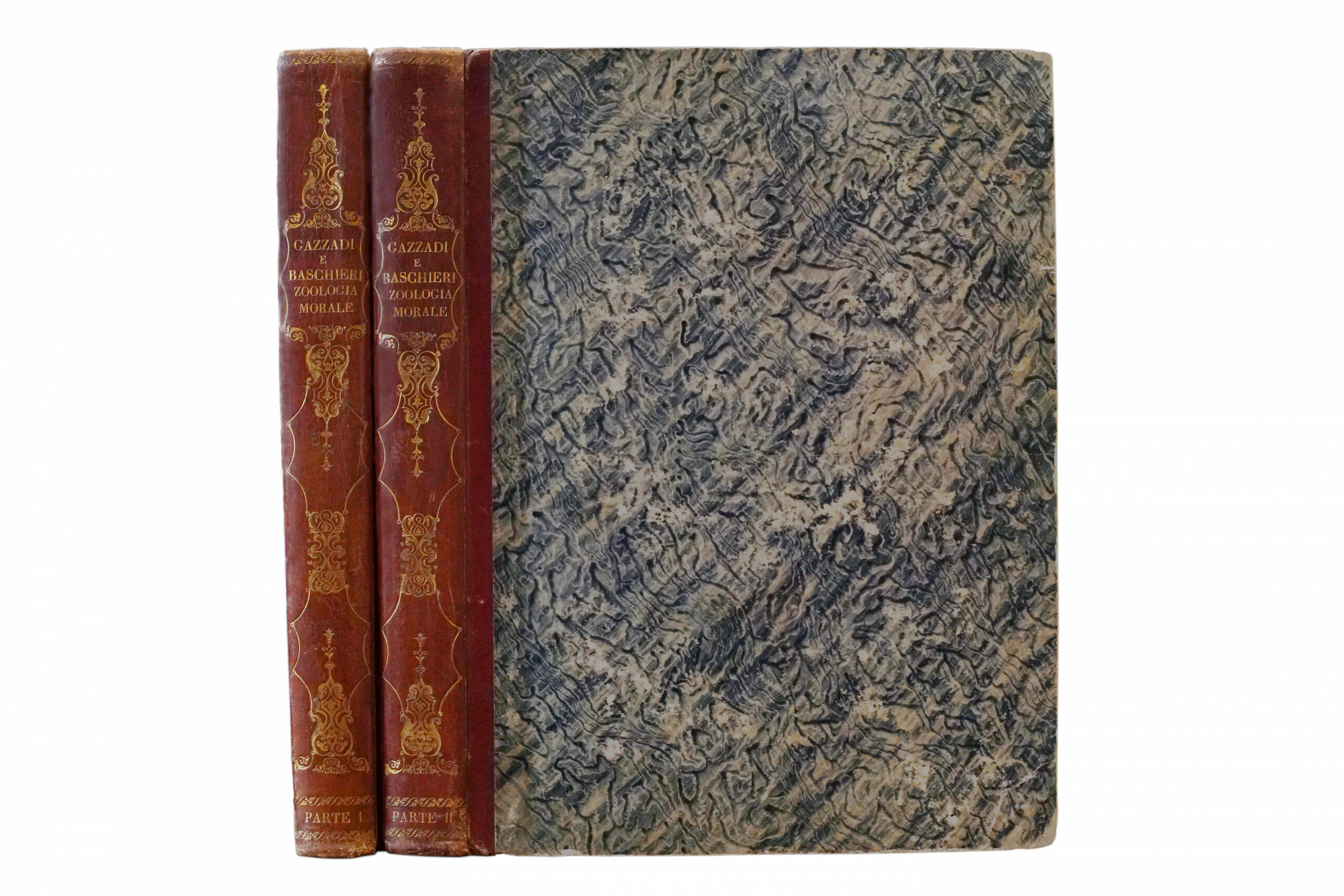Firenze, Vincenzo Batelli e compagni, 1843-46
2 folio volumes [412 x 309 mm] of: I/ 236 pp., 42 full-page color plates out of pagination, a few foxing, stain p.85, small waterstain in the upper corner of a few ll., small têr in the bl. margin of p. 113, 1 pl. slightly browned, 3 stamps on the half-title; II/ (2) ll., pp. 237 to 482, 51 full-page color plates out of pagination, small waterstain on the upper left corner of the first ll., a few foxing including on 5 plates. A total of 93 plates. Bound in light-brown half-calf, covers of marbled paper, flat spines decorated lengthwise, speckled edges. Contemporary Italian binding.
First and only edition, published in 46 parts between 1843 and 1846, of the rarest Italian work of zoology in colors.
Bibliografica italiana, 1534 and 2837; Nissen ZBI 1492; Wood 352 (which incorrectly indicates 119 plates, relying on the number of animals listed in the index).
The species described range from the most common ones, such as the horse or the dog, to the most exotic, with for example the pangolin. Some descriptions are of the highest interest because they concern extinct species such as the quagga, a subspecies of zebra from South Africa that died at the end of the 19th century.
Baschieri was a doctor of Modena while Gazzadi was a poet and translator from the region of Sassuolo; a street of Modena bêrs his name nowadays.
The work is illustrated with 93 plates hand-colored at the time, representing 120 animal species with a landscape background, placed in their natural habitat by J. Giarre with rivers, mountains, icebergs…
The lower part of the plate is occupied by a caption in Italian, and the engraving is accompanied by a descriptive text on two pages as well as a poem by Gazzadi which emphasizes the moral properties of the animal.
“The illustrations follow the style of Alessandri’s Animali quadrupedi of 1771-75, not particularly accurate, but with ‘rather good descriptions by Baschieri” (Wood).
The artist has decided to stylize animals and if the rendering is not naturalistic, the result is striking.
The plates illustrating the first part published in 1843 were the lion, the elephant and the dromedary.
‘La grandezza delle figure è tale a dare un’ idê chiara degli animali, che mi sembrano ben ricavati da esati disegni, incisi con amore e con amore colorati’.
Isolated plates of this work, in black and white, sometimes appêr on the market, but copies complete with all the plates contemporary hand-colored are of the utmost rarity.
Precious copy complete with its 93 full-page plates hand-colored at the time, preserved in its contemporary Italian binding.
See less information
